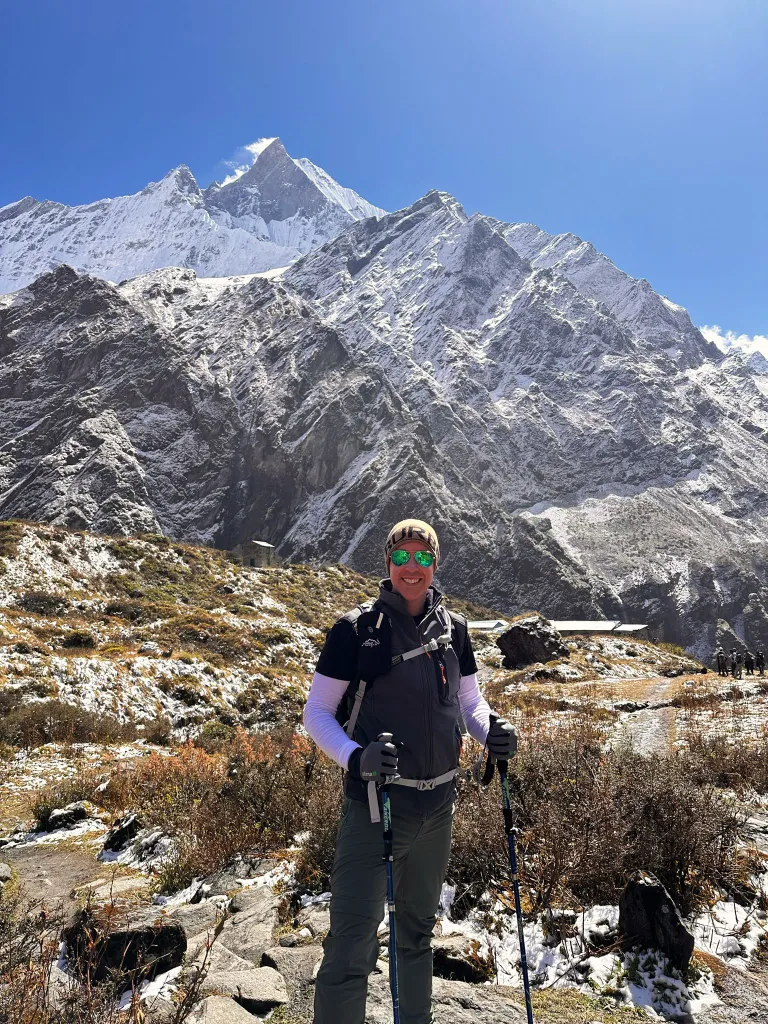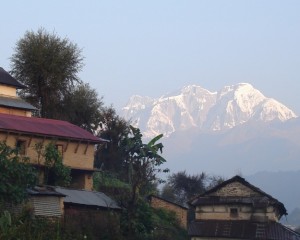How hard is it to navigate Langtang Trek Difficulty?
Many trek enthusiasts dream of exploring the off-beaten trail of Langtang Valley. However, the path explains the Langtang trek difficulty, which is no joke.
The prospect of ascending and descending trails between the Himalayan landscape can evoke excitement and concern.
The Langtang Trek in Nepal is a well-known adventure that attracts trekkers worldwide.
A question frequently asked by those considering this trek is, “How difficult is the Langtang Trek?”. It's a valid concern, as understanding the challenge level helps individuals mentally and physically prepare.
Can a beginner tackle and enjoy the beautiful Langtang trek?
How Challenging Is Langtang Trek?
The offers a scenic path through diverse landscapes, allowing people to explore nature.
The trail involves uphill and downhill sections, like climbing hills and descending into valleys, providing varying viewpoints.
Some parts of the path are steep, like going up a giant staircase. It makes the walk more challenging and adds to the excitement.
Which season is best to tackle the Langtang trek Difficulty?
Spring and Autumn (March-May, September-November)
During Spring and Autumn, the Langtang Trek becomes much more manageable. The weather is lovely, with comfortable temperatures and steady conditions. These seasons are like the Goldilocks zone – not too hot or cold.
The added benefit is that the trails are dry, making walking more accessible and less messy. Due to the friendlier conditions, these are considered the best times to trek in Langtang.
Winter (December-February)
When Winter arrives, the trekking experience becomes more challenging. Snowfall covers the path, and sometimes strong winds blow.
It can make the trail colder and more demanding to walk on. It's like going on a snowy adventure. The temperatures drop, which makes it essential to bundle up well to stay warm. This is a time for trekkers who enjoy a rugged experience.
Monsoon (June-August)
During the Monsoon season, the difficulty level increases due to rain. The trails can get slippery, like walking on a wet floor. It's essential to be careful with every step to avoid slipping.
Tiny creatures like leeches might appear on the path and attach to your skin. This can be uncomfortable, but with some precautions, it's manageable. Monsoon trekking requires more attention and planning.
Exploring Langtang Valley
The serene and picturesque place is Langtang Valley. It is one of the nearest locations to Kathmandu, the capital of Nepal.
Langtang Valley is a hidden treasure surrounded by marvelous glacial lakes and charming villages.
Trekkers and nature enthusiasts call it one of the most beautiful valleys in the world. Tibetan influence and local hospitality When you visit Langtang Valley, you'll experience a unique mix of cultures.

Tibetan ways influence the people here, so you'll find unique traditions, arts, and even particular types of food.
The locals, known as the Tamang people, are hot and welcoming. They take hospitality seriously and will make you feel right at home. The monasteries you'll come across are like living pieces of art that showcase their beliefs.
Langtang Trek Route Difficulty
The adventure of the Langtang Trek begins at a place called Syabrubesi. It's like the starting line of a race. From here, you'll step onto the trail that takes you through the incredible Langtang region.
Walking on the Langtang Trek, you'll notice you're climbing higher and higher. It's like going up a big hill, only you do it over several days. Along the way, you'll also go downhill into valleys. These changes in height can make the trek more challenging as you adapt to different altitudes.
Highlighting key stops
Lama Hotel, Langtang Village, Kang Jin Gompa During your trek, you'll come across unique places like rest stops.
One is called Lama Hotel, a cozy place to spend the night. Then there's Langtang village, a charming settlement that gives you a taste of local life. Finally, there's Kang Jin Gompa, the trek's highest point, where you'll find impressive sights and experiences.
Managing challenges
The Langtang Trek does have its share of challenges. Going uphill can be tiring, like climbing stairs.
Your knees might feel some pressure when going downhill for a long time. Some parts of the route are rocky and tricky. However, the obstacles are easier to tackle with the right mindset and caring for your body.
Physical Fitness and Preparation
You don't need to be a super athlete to do the Langtang Trek, but being in decent shape helps. It's like being prepared for a fun adventure. Moderate fitness requires walking comfortably for a few hours a day without getting too tired.
It would help if you had a positive attitude and mental preparation to make a big difference. It's like mentally preparing for a journey of surprises and challenges.
Before you start the trek, you can do some practice hikes in your local area. You can walk up and down hills, or long walks can help your body get used to trekking.
Building up your endurance, like your body's stamina, can make the Langtang Trek much easier.
Altitude Sickness Awareness
You are climbing a tall mountain and suddenly start feeling strange. It is altitude sickness, and it's essential to recognize its signs.
Symptoms include a headache, feeling nauseous or vomiting, having trouble breathing, feeling dizzy, losing your appetite, and your heart beating faster than usual.
If you ever feel those symptoms while on the Langtang Trek, it's not something to ignore.
You should tell your trekking buddies and guide how you feel. They can help you during the situation.
The first thing you can do with altitude sickness is to go down to a lower altitude. It helps to go back to where your body feels better.
It would help if you drank plenty of water to hydrate, and it helps your body adjust to the height.
Rest is required, and you don't push yourself too hard. It would help if you gave your body time to catch its breath and recover.
To wrap up, Similar to crafting a personalized adventure, the Langtang Trek lets you choose the duration of your journey. You're in control, deciding whether to savor a brief escapade or extend the experience.
With this in mind, Nepal Vision Treks can tailor your itinerary for a secure and delightful journey.
FAQS
1) Is the Langtang trek worth it?
The Langtang Trek is worth it for its stunning landscapes, unique cultural experiences, and adventure in the Himalayas.
2) How long does the Langtang trek take?
The duration of the Langtang Trek can vary, typically 7 to 11 days, depending on the chosen itinerary and trekking pace.
3) Do Nepalese need a permit for the Langtang trek?
Yes, Nepalese nationals also require permits, namely the Langtang National Park Entry Permit and the TIMS (Trekkers' Information Management System) card, for the Langtang trek.
4) What is the maximum altitude for the Langtang trek?
The maximum altitude reached during the Langtang Trek is around 4,300 meters at Kyanjin Gompa.
5) Can you see Everest from Langtang Valley?
Yes, on clear days, you can see distant views of Everest from specific vantage points in the Langtang Valley.
6) Which is better, Everest or Langtang base camp?
Everest and Langtang base camps offer unique experiences; Everest Base Camp is renowned for its iconic views, while Langtang Base Camp provides a quieter trek with diverse landscapes and cultural encounters.
7) How long does it take to get to Langtang Valley?
It takes about 6 to 8 hours by road from Kathmandu to reach the starting point of the Langtang Valley trek, Syabrubesi.
8) Is there WIFI in Langtang Valley?
Wi-Fi availability in Langtang Valley is limited and might be found in certain lodges or teahouses, but it could be more reliable.
9) What is Langtang Valley famous for?
Langtang Valley is famous for its breathtaking natural landscapes, rich cultural experiences, and as a trekking destination in the Himalayas.






